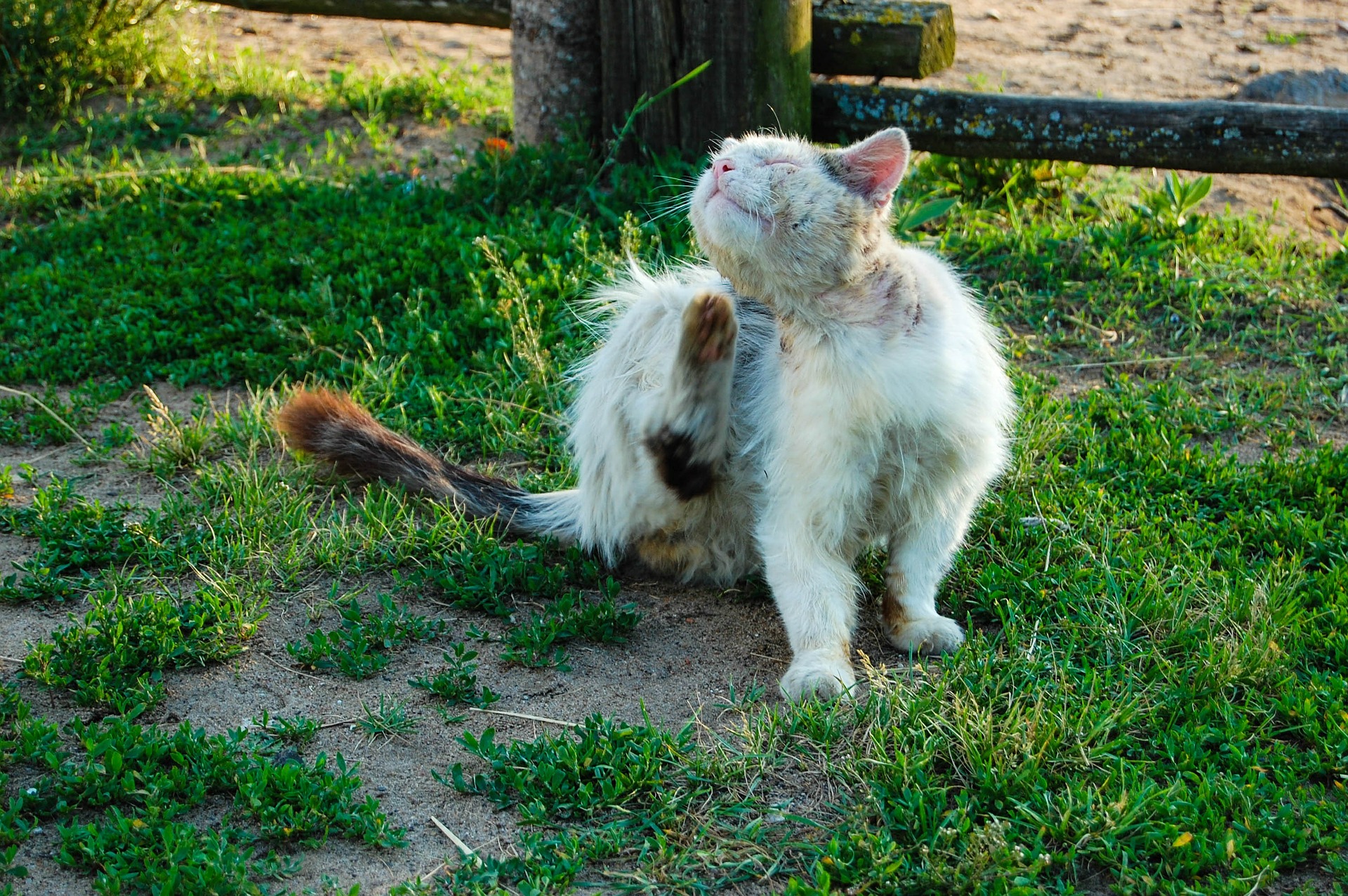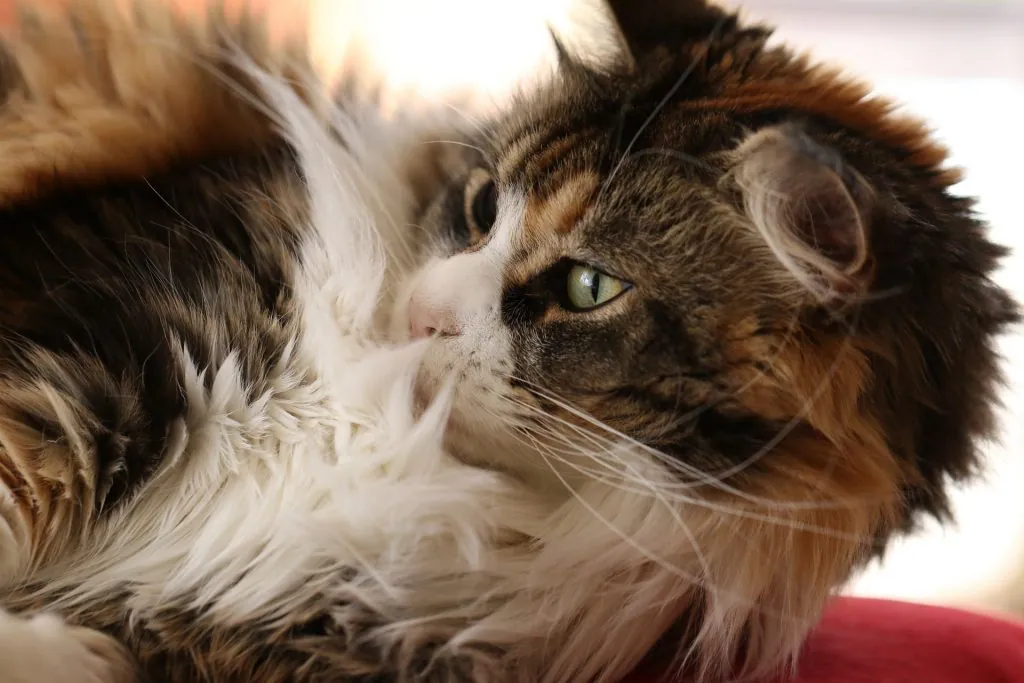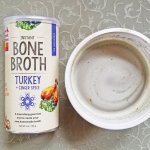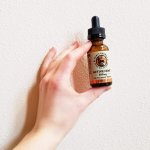Home Remedies for Cats with Dry Skin
Last Updated on
Want to help your cat with dry skin?
When your cat scratches and flakes, it’s natural to be concerned. Fortunately, there are natural solutions to this common problem. Here’s how you can treat your cat’s dry skin.
If your cat has dry skin, it’s dry for a reason. Regardless of how long your cat has been struggling with it, itchy, uncomfortable skin is not a necessary part of life! There’s always a cause for your cat’s discomfort. Dry skin in cats is either caused by fleas, the dryness of the air or may stem from a more systemic issue like a poor diet. Fortunately, when you know the cause of your cat’s dry skin, it is relatively easy to alleviate their distress.
How can you tell your cat has dry skin? Here are the symptoms of dry skin in cats.
Chances are if you’re reading this, you already believe that your cat is suffering from dry skin.
But if you’re still not sure if your cat really does have dry skin, there are ways to identify the symptoms of dry skin in cats.
Watch for excessive scratching and itchiness.
Dry skin is itchy! So if your cat has dry skin, they’ll probably scratch at their skin like crazy. This is a pretty obvious sign and likely the first one you’ll spot if your cat has dry skin.
Inspect their coat for dandruff.
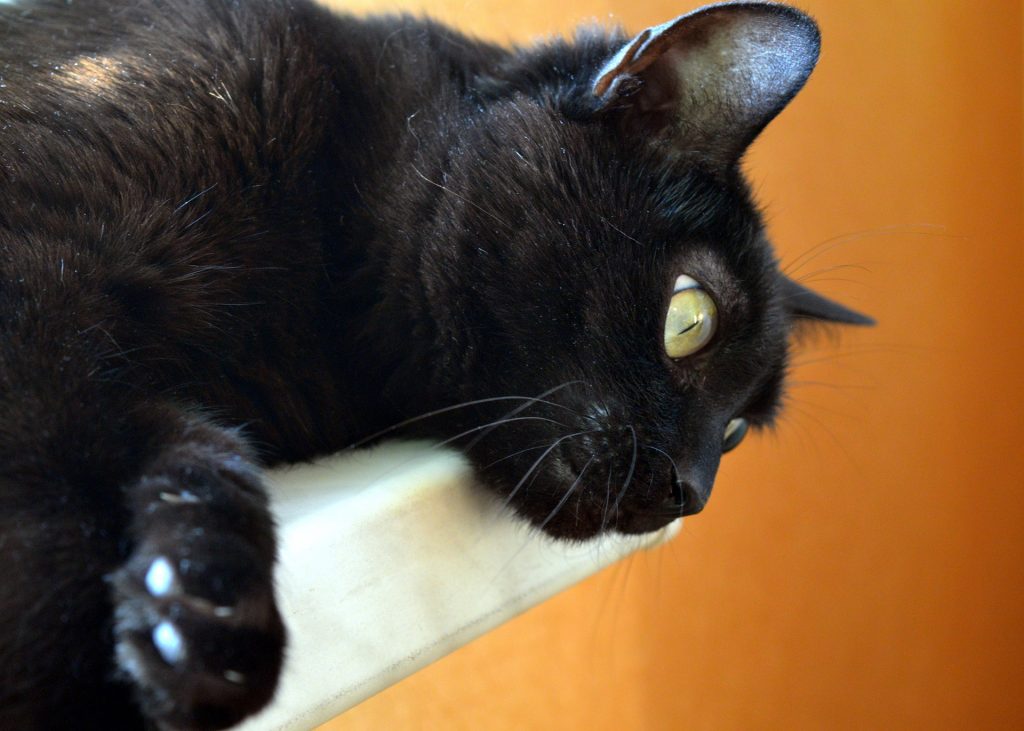
One of the most visible symptoms of dry skin is dandruff – white flakes that accumulate on the surface of your cat’s skin and builds up in their fur. This dandruff could be ridiculously obvious – take a glance at your cat and you’ll see a smattering of white flakes covering their fur. In milder cases of dry skin in cats, dandruff will be invisible until you comb your cat – at which time those little white flakes will accumulate on the comb. In either case, dandruff is a definite sign that your cat’s skin is not quite in perfect condition.
Take a close look – does their skin and coat look healthy?
Dry skin in cats is directly linked to the appearance of their coat. If your cat has dry skin, their fur will appear coarse. If your cat’s skin is dry, their fur won’t be very shiny, either. Also, if your cat’s dry skin is causing them severe discomfort, the constant licking, scratching, and biting at their skin could lead to patchy hair loss. If your cat is scratching themselves bald in spots, dry skin is very likely the culprit.
Identify what’s causing your cat’s dry skin.
Are you feeding your cat a great diet?
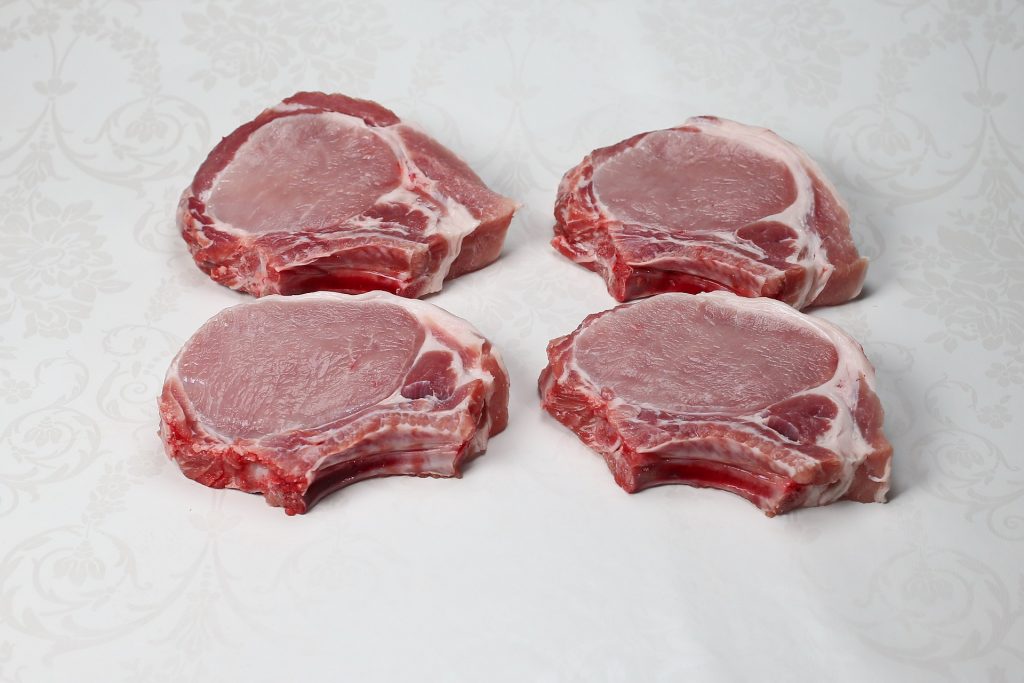
As you probably know, a healthy diet is the first line of defense against health conditions like dry skin. If your cat develops a dry skin issue, it’s a big red flag that it’s time to assess their diet. A diet lacking in fat, for example, can lead to dry skin in cats. A balanced diet of proteins, fats, and essential vitamins and minerals is critical when it comes to skin health. If your cat is currently on a dry diet (regardless of how high-quality it is), it’s more than likely that your cat’s dehydrated. Nom Nom’s fresh, homemade-style cat food is made with human-quality ingredients and is a good choice for cats with skin issues. If you purchase Nom Nom through our links we’ll receive a commission from the sale, and you’ll get 50% off your first order. Thank you!
If your cat’s diet is balanced, nutritionally complete, and they’re getting adequate hydration, the dry skin likely stems from a different issue.
Not sure what constitutes a healthy diet for cats? Here’s one of our favorite sites that will help you to learn about feline nutrition.
Do they have allergies?
Your cat’s dry skin might be caused by an allergy to something in their diet or in the environment. Itchiness and deteriorating skin and coat condition are common symptoms of allergies. Food allergies may also cause gastrointestinal distress and symptoms like vomiting and diarrhea. Allergic skin problems are usually associated with small lesions. These tiny bumps are most often concentrated in the head and neck area. If you suspect that your cat is allergic, veterinary treatment is advised. An elimination diet can help you to identify the cause of your cat’s problems.
If you suspect that your cat has allergies or intolerances, you can gather more information through a pet intolerance test. Intolerance tests can shed light on specific factors that might be irritating your cat—like tuna or dandelions. The Affordable Pet Test is a well-received pet intolerance test that may be worth a try if you’re at a loss for answers. If you purchase the test through our link, we’ll receive a percentage of the sale, but it won’t cost any extra. Thank you!
If your cat is suffering from allergies, read our article on allergy medicine for cats to learn more about your options.
Does your cat have fleas?
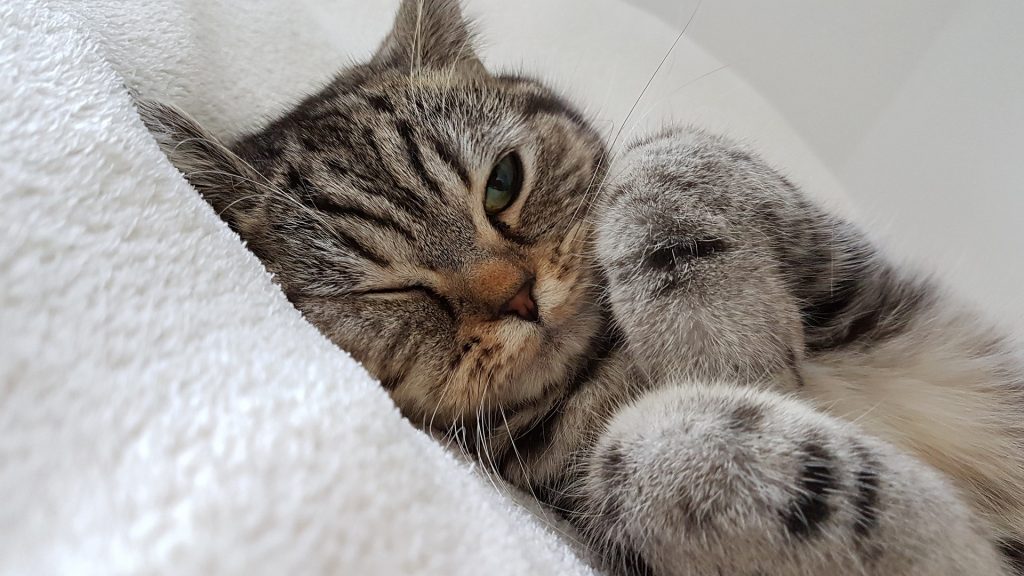
More prevalent during the warmer summer months, fleas are another common cause of dry skin in cats. These little creatures drop plenty of poop and eggs in your cat’s fur. A clear sign that fleas are causing your cat’s dry skin is if their fur is full of black specks – excrement, and white particles – flea eggs. When a cat is afflicted with a flea infestation, their skin will become very uncomfortable.
But then there’s a conundrum: sometimes the treatment for fleas can also cause dry skin and worse. It’s important to choose a gentle, natural flea treatment that will eliminate the cause of your cat’s dry skin without making things worse. We’ll go over that shortly.
Finally, rule out any other common causes of dry skin in cats.
Have you been shampooing your cat or applying a topical treatment of any type? Harsh chemicals can absolutely cause dry skin. Take a look at what you’ve been putting on your cat to rule out the possibility that it’s causing the discomfort. Replacing any chemical treatments with gentle, natural alternatives could eliminate your cat’s dry skin. Similarly, if the air is super dry, that could also be harsh on your cat’s skin. Consider using a humidifier .
The Best Natural Treatments and Home Remedies for Dry Skin in Cats
Diatomaceous Earth for Fleas
Food-grade diatomaceous earth is a fantastic natural solution for cats with fleas. This natural powder actually cuts up and dehydrates the fleas that cause your cat’s dry skin.
However, if you apply diatomaceous earth topically, it can actually dry out your cat’s skin. While many people do apply it straight on their cats, if you’re concerned about making their dry skin worse, you might prefer to just go to the source and kill the fleas in your home before they can get to your cat.
To get rid of the fleas and ticks in your home, vacuum your cat’s favorite places to hang out in the home. After you vacuum, sprinkle a liberal amount of diatomaceous earth in those areas. After two to three days, the DE
should have done its work and you can use a shop vac to clean up the diatomaceous earth.
Applying diatomaceous earth around your house will get rid of the pests that are continuing to latch onto your cat. You can also use diatomaceous earth as an outdoor insecticide.
Apple Cider Vinegar
Fleas hate the low PH levels of apple cider vinegar . A solution of apple cider vinegar and warm water applied to your cat can help get rid of the fleas. Some people just spray pure apple cider vinegar straight onto their cat’s fur, let it soak in for a few minutes, then rinse it off. Another way to treat your cat’s fleas with apple cider vinegar is to fill a tub with water, add a couple of cups of apple cider vinegar to the water, and then bathe your cat thoroughly.
To soothe general cases of dry skin…
Coconut Oil
Coconut oil is a completely natural saturated fat that works like lotion to soothe your cat’s skin.
You can gently massage a teaspoon of oil into your cat’s fur and incorporate it into their diet if they need a fat supplement. Just remember that coconut oil is very high in calories. If your cat has a well-balanced diet already, extra saturated fat is not necessary.
Add dietary fats.
Omega-3 Fatty Acids and Fish Oil 
DHA and EPA deficiencies can cause poor skin health – thus supplementing your cat’s diet with these fatty acids can help with dry skin. They’re also capable of reducing allergic symptoms that are linked to your cat’s dry skin. Sources of these fatty acids are found in fish oil, krill oil, and mussel oil. Just remember that your cat is an obligate carnivore and requires preformed omega-3 fatty acids from animal sources. While other animals can convert plant-sourced ALA into EPA and DHA, cats cannot process the ALA (alpha-linolenic acid) found in grapeseed or flaxseed oil.
Feed a healthy diet.
A biologically-appropriate diet is paramount in maintaining your cat’s overall health.
Look for an appropriate balance of proteins, fats, and minimal carbohydrates, combined with proper levels of crucial vitamins and minerals.

